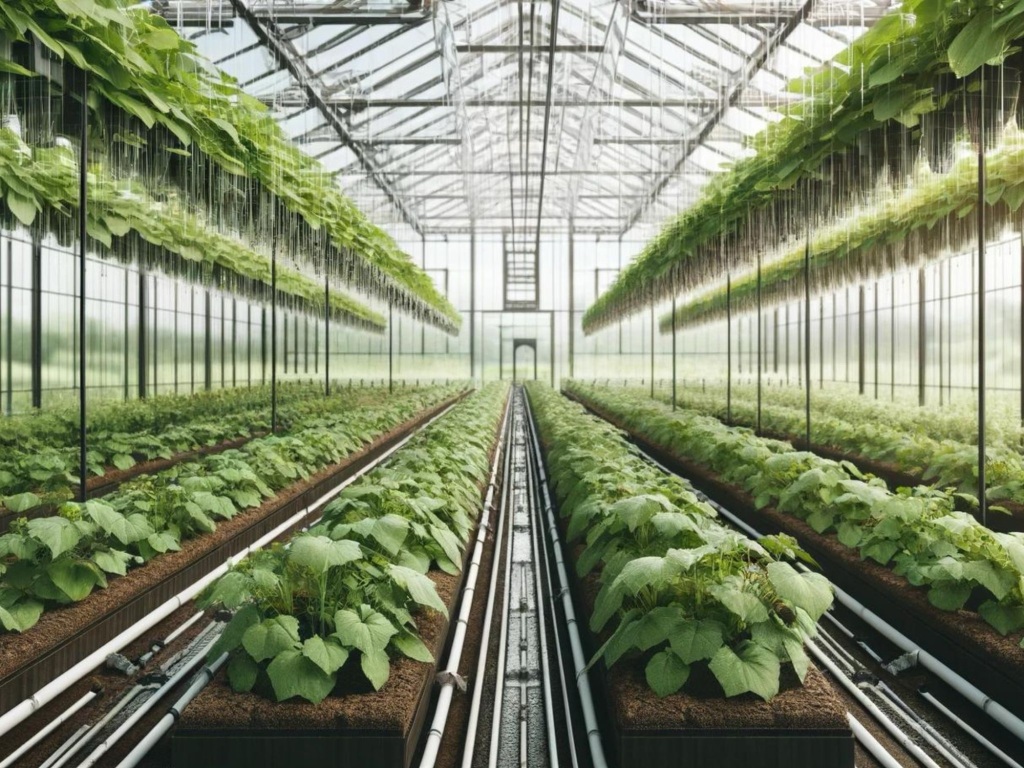
By Arjun Kafle (Ph.D. Candidate, Department of Plant and Soil Science, Texas Tech University

Greenhouse vegetable production is a multi-million-dollar industry in the United States. The primary soilless substrate for this industry is peat, which is causing environmental issues like carbon budgeting and climate change due to excessive peat extraction from the peatlands. Additionally, growers seek sustainable alternative soilless substrates that substitute peat in the growing media.
Among the different alternatives tested, much research has reported that biochar or compost performed very well in a controlled environment for greenhouse crop production. However, the proportion of these amendments that can replace the dominant peat component from the soilless substrate is debatable.
My colleagues and I aim to fill the knowledge gap in finding the appropriate media composition by including biochar-compost as an amendment for transplant/matured fruit-bearing vegetable production in greenhouse industries. In two recent studies, we combined three types of biochar, hardwood (derived from oak trees), softwood (derived from pine trees), and hemp (locally prepared), with cotton-burr compost to partially or completely replace peat in the standard peat–perlite-vermiculite (50:25:25 v/v) growing media.
Effect of biochar-compost on soilless media properties and cucumber seedling establishment.
Kafle, A., Singh, S., Singh, M., Venkataramani, S., Saini, R., & Deb, S. (2024). Effect of biochar-compost amendment on soilless media properties and cucumber seedling establishment. Technology in Horticulture, 4(1). https://doi.org/10.48130/tihort-0023-0029
Our first study addresses the concerns of nursery growers, who prioritize rapid production of quality transplants. The growing media determines the seedling’s germination and initial growth. The peat-dominated media has multiple drawbacks. It becomes acidic with time and has reduced water-holding capacity, affecting seed emergence and seedling vigor. Cucumber, a popular greenhouse vegetable crop, was taken as a representative crop to score the ability of biochar-compost to ameliorate the media and see if the amendments can benefit nursery growers through the rapid production of high-quality cucumber seedlings. The results showed that amending the media with biochar compost can partially or completely stimulate faster germination by 2-5 days, retaining more water compared to the traditional standard media.
It can be very beneficial to greenhouse growers where the region is facing water scarcity and demand for transplants is high. Biochar avoids the chance of acidity in traditional peat media due to its liming effect and reduces the cost of regular maintenance for pH. If the growers are interested in using particular biochar, softwood biochar with compost as a complete replacement for peat is viable for producing high-quality seedlings with vigorous shoot and root systems in cucumbers.
Greenhouse cultivation of cucumber in soilless media amended with biochar and compost
Venkataramani, S., Kafle, A., Singh, M., Singh, S., Simpson, C., & Siebecker, M. G. (2023). Greenhouse cultivation of cucumber (Cucumis sativus L.) in standard soilless media amended with biochar and compost. HortScience, 58(9), 1035-1044. https://doi.org/10.21273/HORTSCI17257-23
The second study highlights the effectiveness of the biochar-compost amendments on cucumber productivity. Because the crop stands on the growing media for 2-3 months in the greenhouse to produce the yield, it is of prime concern for commercial greenhouse industries to find a suitable soilless substrate. The results showed increased fruit number and cucumber yield with biochar-compost treatments compared to unamended peat media. This will increase the revenue of the greenhouse vegetable growers as marketable yield gets higher.
One smart step in keeping the amendments in the growing media can benefit the industry in multiple steps throughout the growing season. Particularly, hardwood biochar compost had the highest productivity of the cucumber by completely replacing peat from the media. However, other biochar-compost combinations also performed well, shedding light on the potential of biochar-compost combinations in increasing the marketable yield.
Our research findings not only favor greenhouse vegetable growers but can be applied to any business that produces seedlings/plant materials/fruits of herbs, flowers, ornamental plants, foliage plants, small berries, succulents, bedding plants, and even lawns to consumers. By understanding the synergistic effects of biochar and compost amendments in soilless media, growers can rely on sustainable, environmentally friendly, and profitable alternative substrates for greenhouse crop production.
About the Author
Arjun Kafle is originally from Nepal. He came to the United States to get a higher education in Agriculture. His doctoral program research focuses on sustainable vegetable production using biochar as a soil and soilless media conditioner. He has more than four years of research experience with biochar, during which he has investigated its effect on the growing environment in containers, trays, or even field conditions, positively impacting crop productivity. His future plans are to continue his research on biochar to explore more about this unique compound and its applicability in different agroclimatic zones.






Leave a comment